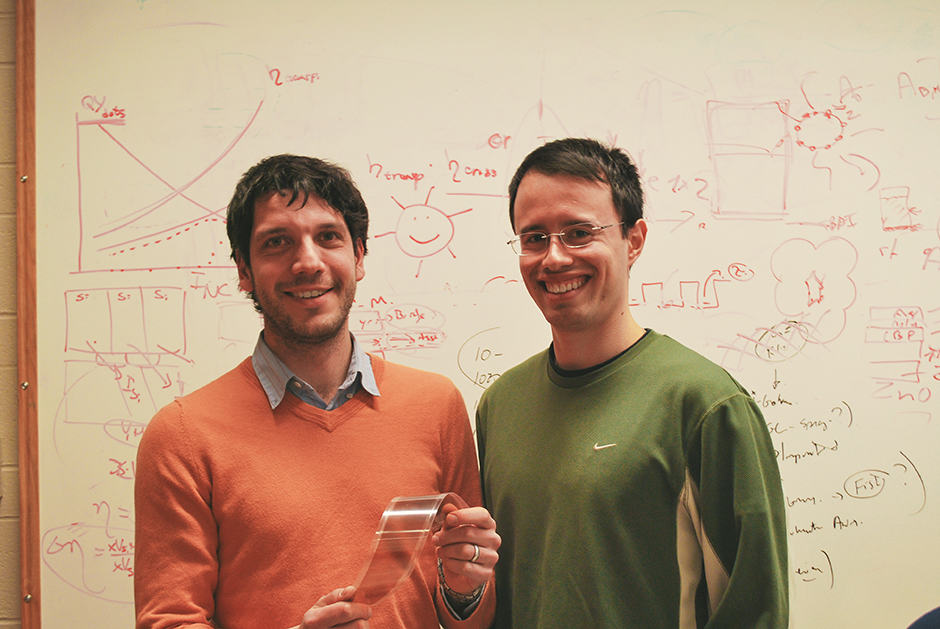In a few years, we may see cars and roofs everywhere generating electricity, all due to the work of Dr. Illan Kramer, a post-doctoral researcher with the Sargent Group of the Faculty of Applied Science & Engineering. Kramer’s work focuses on the use of a material known as colloidal quantum dots (CQDs). CQDs are nanocrystals of semiconducting material that function uniquely at the quantum scale, where they take advantage of the laws of quantum mechanics.
The results of Kramer’s research have led to the discovery of a novel process to produce CQD solar cells, which is far more cost-effective than previous manufacturing techniques. He has dubbed his process “SprayLD.” SprayLD can be used to coat flexible films and wraps to fit objects of odd shapes, such as cars or roads. In theory, SprayLD can make nearly anything an energy-generating machine.
CQDs have previously been investigated as a technology by various research groups around the world for their ability to produce flexible solar cells. Since CQDs are suspended in solution, they can be deposited into films using spray-coating techniques.
However, up until now, manufacturing these CQD solar cells required an arduous process known as drop-casting.
“Until SprayLD, this process was done one drop at a time, by hand, a very laborious process with a large amount of variation from sample-to-sample. We found a way to automate it and implement it using fine mists of spray,” explains Kramer. He developed his manufacturing process while searching for a more cost-effective way to make CQD solar cells.
What makes SprayLD such an interesting breakthrough is its focus on cost-effectiveness. SprayLD can produce CQD solar cells over a large area and at low cost. SprayLD is especially cost-effective as it does not need expensive infrastructure to produce solar cells covering a large area.
“If we expect, as many people do, that we are going to solve the world’s energy needs through solar cells, then we need to get to a place where we can quickly and cheaply cover large swaths of land in solar cells. SprayLD can, with some further process development, get us there,” says Kramer.
Astoundingly, this increase in cost-effectiveness does not come at a cost to electrical efficiency. In recent publications in Advanced Materials and Applied Physics Letters, Kramer demonstrated that his method does not decrease solar-cell efficiency when compared to other CQD production methods.
In the future, Kramer says that he hopes to see his technology become something as ubiquitous as “wallpaper that you could unroll onto any surface you like — maybe a rooftop or a car hood or an airplane wing.”
Soon, we may see our world coated in films generating solar power, in part due to the pioneering research done at U of T.


